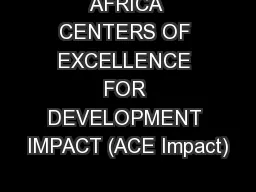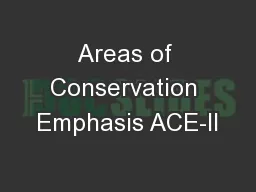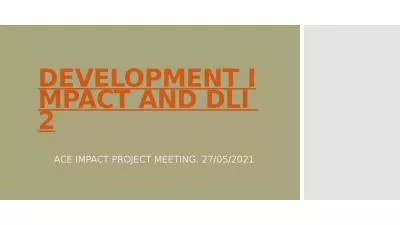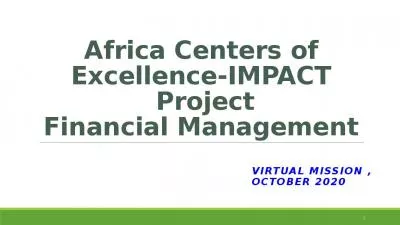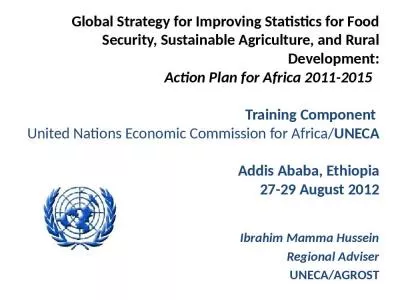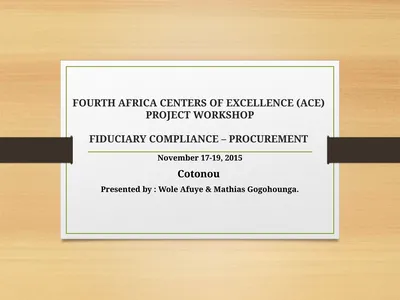PPT-AFRICA CENTERS OF EXCELLENCE FOR DEVELOPMENT IMPACT (ACE Impact)
Author : easyho | Published Date : 2020-06-17
Meeting with ACE Impact Project Steering Committee Representative level May 8 2018 2 Africa Centers of Excellence ACE I first phase Outline Africa Centers of Excellence
Presentation Embed Code
Download Presentation
Download Presentation The PPT/PDF document "AFRICA CENTERS OF EXCELLENCE FOR DEVELOP..." is the property of its rightful owner. Permission is granted to download and print the materials on this website for personal, non-commercial use only, and to display it on your personal computer provided you do not modify the materials and that you retain all copyright notices contained in the materials. By downloading content from our website, you accept the terms of this agreement.
AFRICA CENTERS OF EXCELLENCE FOR DEVELOPMENT IMPACT (ACE Impact): Transcript
Download Rules Of Document
"AFRICA CENTERS OF EXCELLENCE FOR DEVELOPMENT IMPACT (ACE Impact)"The content belongs to its owner. You may download and print it for personal use, without modification, and keep all copyright notices. By downloading, you agree to these terms.
Related Documents

